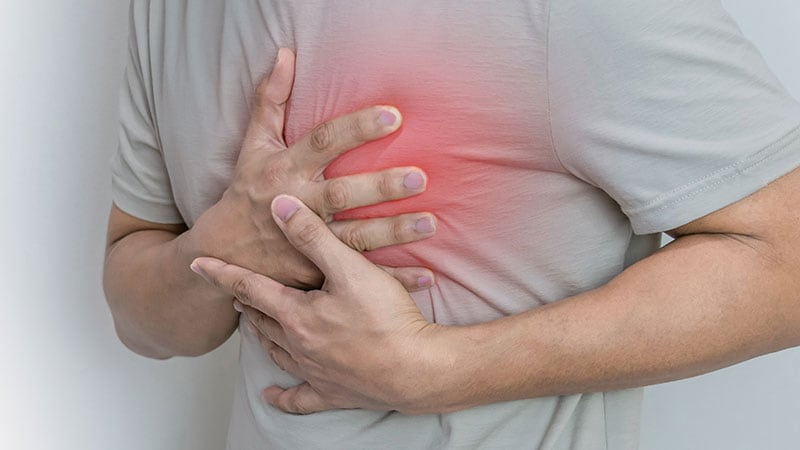Intermuscular fat plays a significant role in the development of cardiovascular disease, said Vicente Javier Clemente-Suárez, PhD, professor of sports sciences at the European University of Madrid, Spain. He urged the scientific community and the public to look beyond traditional metrics like BMI and waist circumference. A recent study published in The Journal of Clinical Endocrinology & Metabolism highlights the risks associated with “patients with apparent normal weight but hidden metabolic risk,” as emphasized by Clemente-Suárez in this interview with El Médico Interactivo, a Medscape Network platform.
What does the article published in The Journal of Clinical Endocrinology & Metabolism contribute regarding the distribution of body fat and cardiovascular risk?
This article provides an innovative view on how not only the total amount of body fat but its specific location affects cardiovascular risk. Traditionally, we have focused on abdominal visceral fat as the most dangerous, but this study shows that intermuscular fat also plays a key role in the development of cardiovascular diseases. This finding opens new research lines and highlights the importance of looking beyond BMI and abdominal circumference. In other words, it’s not just about how much weight we have, but how it is distributed within the body, especially in tissues like muscle.
Why could fat accumulated between muscles be more dangerous?
It’s a ‘hidden’ type of fat that cannot be seen, but it works very actively at a metabolic level. This fat infiltrating the muscle fibers interferes with muscle function, reduces efficiency, promotes a chronic inflammatory state, and contributes to insulin resistance. Unlike subcutaneous fat, which is more passive, intermuscular fat has a pro-inflammatory effect and is associated with deeper and more silent health deterioration, particularly in metabolic and cardiovascular health, all without necessarily reflecting visible obesity.
What mechanisms explain the possible relationship between fat in the thighs and cardiometabolic risk?
Several key mechanisms could explain this association:
- Chronic low-grade inflammation: Intermuscular fat produces inflammatory cytokines that impair endothelial function and promote atherosclerosis.
- Insulin resistance: By infiltrating the muscle, this fat affects glucose uptake, potentially triggering glucose metabolism alterations and the development of type 2 diabetes
- Muscle dysfunction: A muscle infiltrated by fat loses contractile efficiency, reducing physical activity and perpetuating the vicious cycle of physical inactivity and metabolic decline
- Alteration in hormonal and metabolic signaling: This fat acts as a dysfunctional endocrine organ, disturbing lipid, glucose, and blood pressure balance
Who would benefit the most from this finding?
It may be particularly useful for patients who appear to have normal weight but are at risk of hidden metabolic issues, such as sedentary individuals, those with a family history of diabetes or cardiovascular disease, or those with sarcopenia. It is also relevant for older adults, patients with metabolic syndrome, and postmenopausal women, where intermuscular fat may increase without noticeable changes in body weight. This helps us identify patients who might seem healthy based on conventional measures but have accumulated fat in areas where it has a negative impact on their health.
Could this study influence how cardiovascular risk is evaluated during consultations?
Absolutely. This research reinforces the need for a more holistic view of cardiometabolic risk that isn’t limited to measuring weight, waist size, or cholesterol. In clinical practice, this could translate into:
- Giving more importance to body composition, assessing lean mass and fat mass using bioimpedance or densitometry
- Encouraging functional evaluation of muscles, especially in older individuals
- Considering less visible factors like actual physical activity and loss of muscle mass
As this evidence becomes more established, it’s likely that in the future, we will incorporate more precise tools to assess this hidden fat, such as MRI or muscle scanning, for certain risk profiles.
What practical recommendations can be offered from medical consultations to prevent the accumulation of this fat?
From the perspective of a physician or sports sciences professional, we can recommend:
- Strength and resistance training: Working on large muscle groups, especially in the legs, is key to preventing fat infiltration in muscles. When activated, it burns fat and keeps the muscles healthy
- Follow an anti-inflammatory diet: Rich in vegetables, omega-3, fruits, legumes, and avoiding excessive simple sugars and ultra-processed foods
- Avoid sedentary behavior: Daily walking, using stairs, staying active during work — small daily habits make a big difference
- Monitor sarcopenia in older adults: Maintaining muscle mass with tailored training and adequate protein intake is crucial after the age of 60
As you say, looking beyond BMI and abdominal circumference…
Indeed, studies like this remind us that cardiovascular and metabolic health cannot be assessed using just a scale or a tape measure. There is fat that isn’t visible but may be silently working to increase our risk. That’s why it’s crucial to move toward personalized medicine, based on muscle tissue quality and active prevention through lifestyle changes.
This article was translated from El Medico Interactivo.
